13 Must-Know Tips For Looking After A Pregnant Mare

Expecting a foal is an exciting time for any horse owner! Proper care during pregnancy ensures both mare and foal have the best chance at health and happiness.
From nutrition adjustments to exercise considerations, understanding how to support your pregnant mare through this 11-month journey requires specific knowledge and attention to detail.
1. Schedule Regular Vet Check-ups
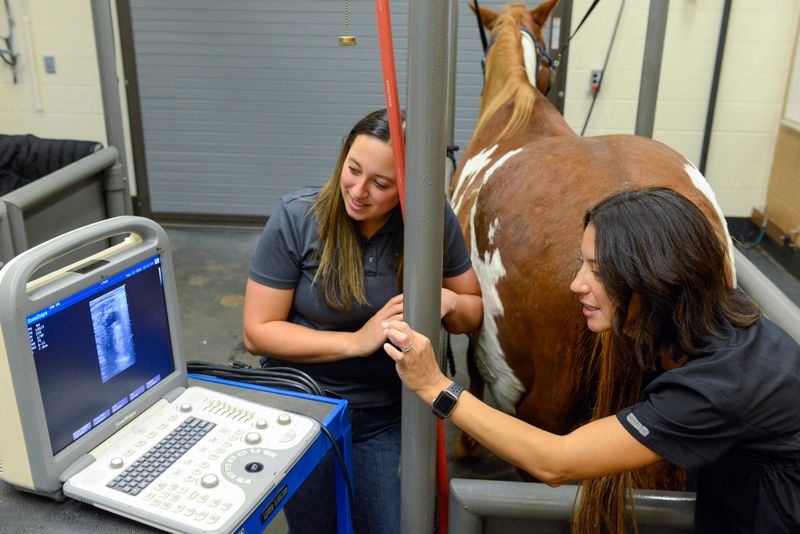
Don’t wait until problems arise before calling the vet. Regular examinations throughout pregnancy help catch potential issues early and ensure everything’s progressing normally.
Your veterinarian will monitor fetal development, check the mare’s overall health, and advise on vaccination timing. Most recommend evaluations at 14-21 days after breeding, then at 45 days, 6 months, and monthly in the final trimester.
2. Adjust Feed Quality And Quantity
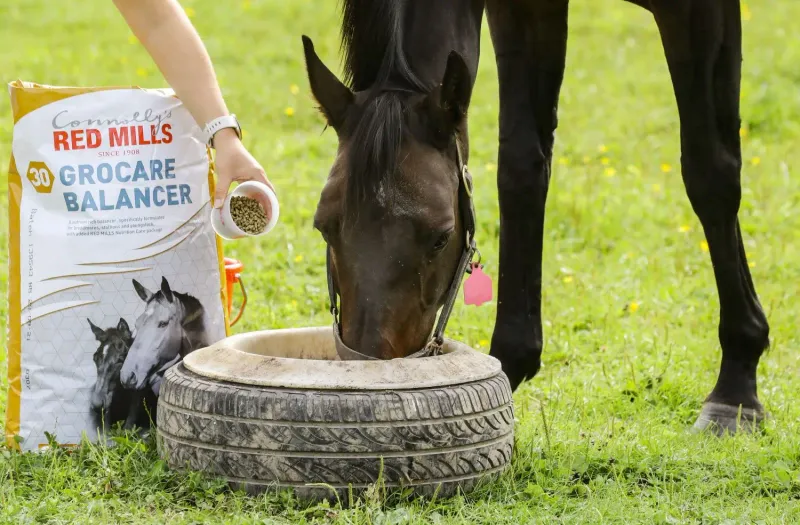
Feeding changes must happen gradually throughout pregnancy. A pregnant mare doesn’t need much extra food during her first eight months – just good quality forage and appropriate vitamins and minerals.
The last three months require significant adjustments as the foal grows rapidly. Increase feed by 30-50% and consider adding a specialized broodmare supplement to support milk production and foal development.
3. Monitor Weight Carefully

Striking the perfect weight balance matters tremendously. Overweight mares face difficult deliveries and health complications, while underweight mares might struggle producing enough milk.
Track body condition scores throughout pregnancy, aiming for 5-7 on the 9-point scale. The mare should gain about 9-12% of her body weight during pregnancy, with most coming in the final trimester as the foal develops.
4. Maintain Appropriate Exercise

Light activity keeps pregnant mares healthy and prepares their bodies for foaling. Gentle riding during the first 7-8 months is usually fine for mares accustomed to work.
Free turnout in a safe pasture provides ideal exercise in late pregnancy. Avoid strenuous riding, jumping, or anything that risks falls or injuries. Watch for signs of discomfort and always follow your vet’s recommendations based on your mare’s specific condition.
5. Create A Safe Environment

Pregnancy makes mares more vulnerable to injuries and stress. Remove hazards like loose wire, protruding nails, or slippery surfaces from her living area.
Group pregnant mares with compatible, calm herdmates rather than rowdy youngsters or aggressive horses. Provide shelter from extreme weather and ensure enough space for comfortable movement. Remember that a pregnant mare’s balance changes as her weight distribution shifts.
6. Follow A Strategic Vaccination Schedule
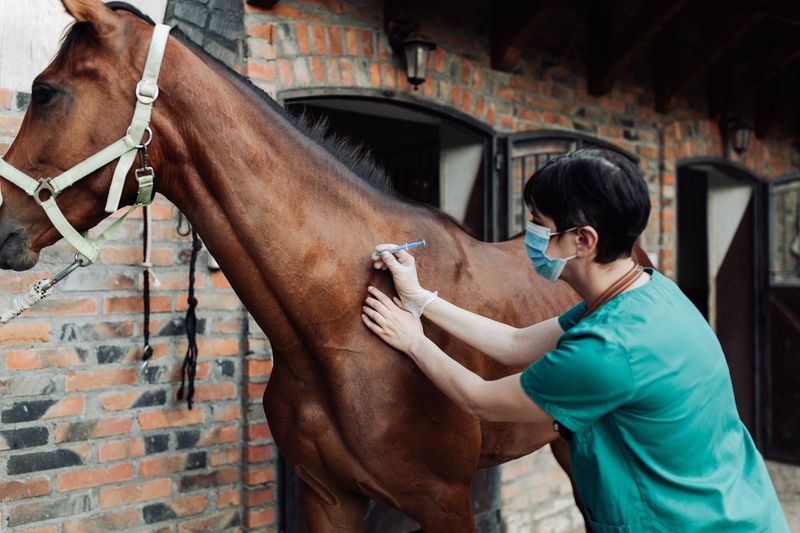
Vaccinations protect both mare and developing foal, but timing matters critically. Most vets recommend boosting core vaccines 4-6 weeks before foaling to maximize antibody transfer through colostrum.
Avoid giving modified live vaccines during pregnancy. Always consult your veterinarian about which vaccines are safe and when they should be administered. The mare’s vaccination history and local disease risks will influence recommendations.
7. Implement Proper Deworming Protocols
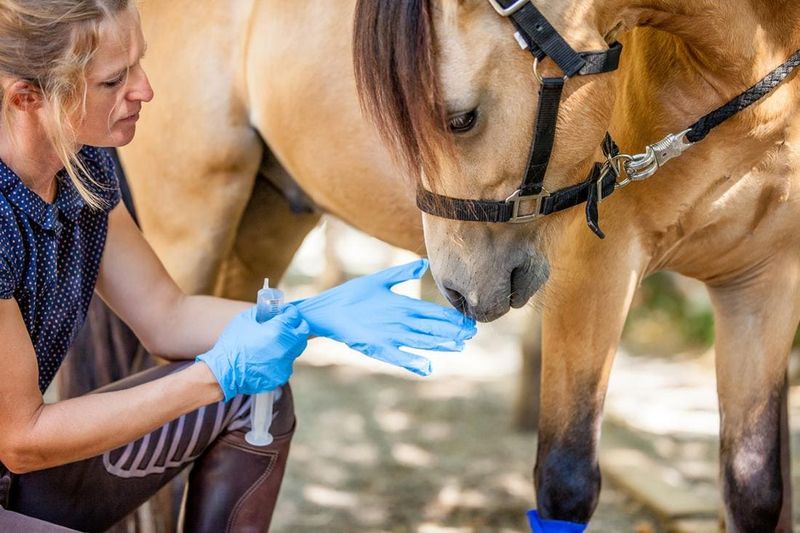
Parasite control requires special consideration during pregnancy. Heavy parasite loads can affect the mare’s health and the developing foal.
Work with your vet to establish a safe deworming schedule. Some dewormers aren’t recommended during early pregnancy, while others should be given just before foaling to reduce parasite transmission to the newborn foal. Fecal egg counts help determine the right approach.
8. Watch For Warning Signs

Knowing what’s normal helps you spot trouble quickly. Concerning symptoms include vaginal discharge, prolonged fever, colic signs, significant swelling, or sudden behavior changes.
Monitor breathing rate, appetite, and manure consistency daily. Look for unusual restlessness or depression. Early intervention often prevents serious complications, so don’t hesitate to call your vet if something seems off, even if it’s subtle.
9. Prepare For Foaling
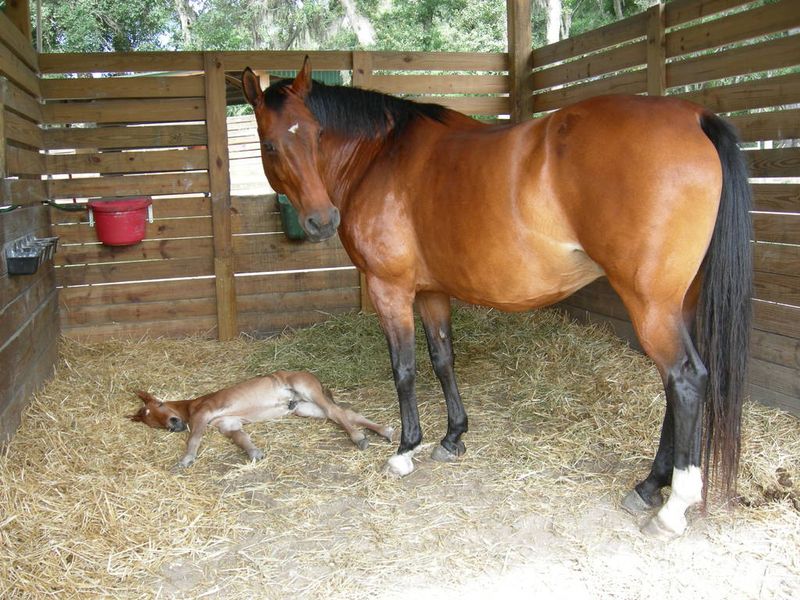
Getting ready well before the due date reduces stress when labor begins. Assemble a foaling kit with clean towels, tail wrap, iodine for the umbilical stump, and your vet’s emergency contact information.
Clean and disinfect the foaling area thoroughly. Many owners install foaling cameras for remote monitoring. Learn the normal foaling process and signs of trouble so you’ll know when intervention is needed.
10. Plan For Milk Testing

Predicting foaling time becomes easier with milk testing. In the weeks before delivery, changes in the mare’s mammary secretions provide clues about when labor might begin.
Commercial test kits measure calcium levels or pH changes that occur 24-48 hours before foaling. This helps you know when to start night watches and be present for the birth. Not all mares follow textbook patterns, but testing adds valuable information.
11. Manage Social Dynamics
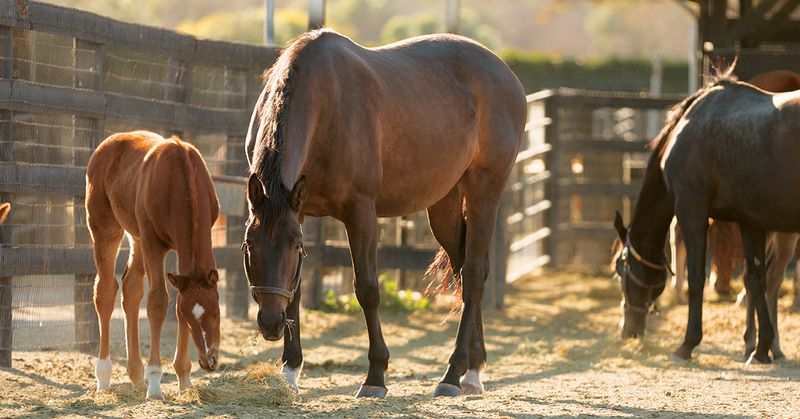
Pregnant mares benefit from stable social arrangements. Sudden herd changes cause stress that can affect both mare and foal health.
If possible, keep the mare with familiar companions throughout pregnancy. When introducing necessary changes, do so gradually. Some mares become more protective or irritable as pregnancy progresses – respect these behavior changes while ensuring they still receive proper handling.
12. Consider Seasonal Timing

Weather extremes create challenges for heavily pregnant mares. Hot weather increases dehydration risks and heat stress, especially in the final trimester when body heat production rises.
Cold, icy conditions increase fall risks when balance is already compromised. Plan breeding timing with your climate in mind when possible. Provide appropriate shelter, cooling options in summer, and safe footing in winter.
13. Balance Stress And Rest
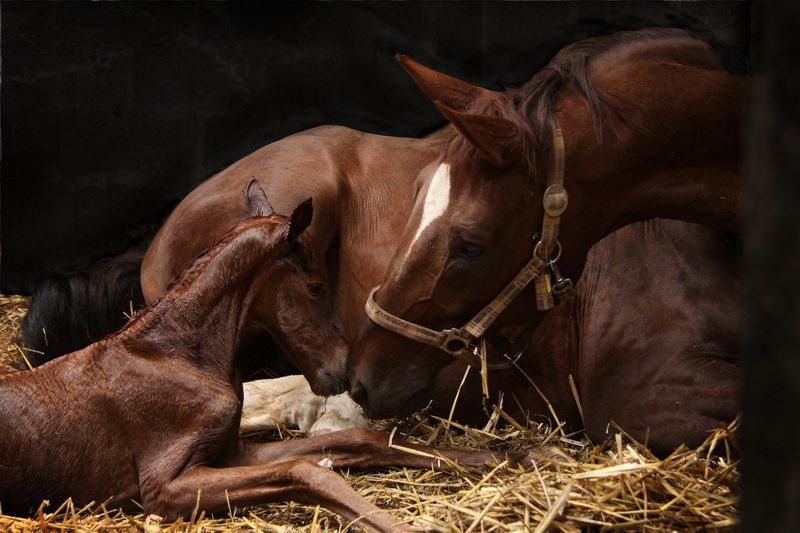
Mental wellbeing affects physical health during pregnancy. Excessive stress releases hormones that can potentially impact the developing foal.
Maintain predictable routines that provide security. Ensure adequate quiet time and comfortable rest areas. Watch for signs of discomfort like frequent position changes or lying down and getting up repeatedly – these might indicate pain requiring veterinary attention.






